Intro to Lisbon
About forty miles inland from the Atlantic Ocean, along a wide section of the Tego River sits Lisbon, the largest city in Portugal as well as its capital. Portugal is in the far west of continental Europe squashed between Spain and the Atlantic Ocean. During Europe’s “Age of Discovery” (which started in the early 15th century) Portuguese explorers were amongst the best in the world. Vasco de Gama discovered a quicker sea-based route to Asia. Portugal grew quite rich, reaching a peak when it counted Brazil as a prized overseas commodity. By the mid 18th century Portuguese power had already begun to wane when a massive earthquake destroyed much of Lisbon on All Saints day in 1755. The city was rebuilt all at once, somewhat cheaply, but mostly in the same style. That 18th century architecture and lack of modern upgrades give the city its charm today. Only the city’s old Arab quarter, the Alfama, survived the quake.
Today’s Portugal is part of the European Union, uses the Euro, and is noticeably cheaper than most other countries in the currency block. It’s warmer too. Expect very mild winters and spring days that feel like early summer elsewhere. Lisbon isn’t particularly big on world class sites but what it lacks in museums it more than makes up for with atmosphere.
Accessibility
Lisbon makes for a perfect long weekend destination. Three days are more then enough to see the city, enjoy its atmospheric back alleys, and even take a quick day trip to nearby Sintra. Direct flights can be found but not from all the airports you might expect. The only direct from NYC is out of Newark.
Once in Lisbon much of the city you’ll want to see is easily walk-able. The rest of the city is reachable by the old trams you’ll see in every tourist’s photo of the city and to a lessor extent, subways. Lisbon is also a great cab town too as distances are short and prices are low. Hailing a cab is as easy as throwing your hand up.
When we went
April 2015. We arrived after a few days in London late on a Wednesday night and flew home Sunday. Arriving from the US on a Thursday would have been just as nice.
What we did
 There are three major neighborhoods that make up the old part of Lisbon; the Alfama, the Bario Alto, and Chiado Baixa. If you’re looking at the city from the river there are two hills. The one to the left is the Bario Alta. This is the new town which was built after the great earthquake in 1755. This is a fancier area of the city, with some of the finest shopping in Lisbon. The valley is the Chiado Baxio. It was also built after the earthquake. Here you’ll find great squares with wide sidewalks that look like waves, monuments to those great Portuguese explorers, the main train station, and much of the tourist riffraff. The hill to your right is the Alfama. The original city of Lisbon was here, you’ll see the remnants of a once mighty castle. During the Ottoman occupation of the Iberian peninsula it became the muslim quarter of the city. They built a spectacular tangle of narrow streets and alleys that define it today. Prior to the 21st century it was a blue collar fisherman’s quarter that lacked modern amenities even 20 years ago.
There are three major neighborhoods that make up the old part of Lisbon; the Alfama, the Bario Alto, and Chiado Baixa. If you’re looking at the city from the river there are two hills. The one to the left is the Bario Alta. This is the new town which was built after the great earthquake in 1755. This is a fancier area of the city, with some of the finest shopping in Lisbon. The valley is the Chiado Baxio. It was also built after the earthquake. Here you’ll find great squares with wide sidewalks that look like waves, monuments to those great Portuguese explorers, the main train station, and much of the tourist riffraff. The hill to your right is the Alfama. The original city of Lisbon was here, you’ll see the remnants of a once mighty castle. During the Ottoman occupation of the Iberian peninsula it became the muslim quarter of the city. They built a spectacular tangle of narrow streets and alleys that define it today. Prior to the 21st century it was a blue collar fisherman’s quarter that lacked modern amenities even 20 years ago.
Alfama – an AirBnB poster child.
The Alfama certainly has its fair share of tourists but most are there only during the day. At night they go back to the cruise ships or the bigger hotels in other sections of the city. With the exception of a few foreigners staying for a night at one of the neighborhood’s many Fado (music) clubs, the Alfama empties out and its little lanes become the time warp of your travel dreams.
We had no problems finding a great apartment deep in the Alfama with modern amenities, a great view, and an even better price tag. The front windows opened up to a courtyard below which featured live Fado music each night. Fado music is the national music of Portugal. It can be about anything but most of the time it sounds mournful and topics often include hardships of the poor, lost love, and tales of sailors lost at sea. You will have no problem finding a Fado club in Lisbon, particularly in the Alfama. All across Europe traditional music is a dying art that is most often found in settings reserved entirely for tourists. Yet in Lisbon Fado seems to thrive. Walk anywhere at night and within no time you’ll hear its melancholy sound bouncing off the stone walls. I think a lot of its continued popularity has to do with the atmosphere radiating out of most 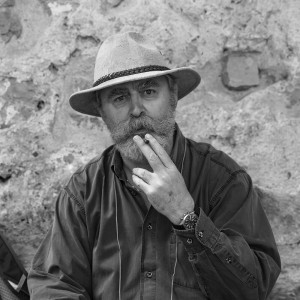 Fado clubs. The place we went to, A Baiuca (Rua de São Miguel, 20, Alfama; +351 21 886 7284), was nestled in a small alley and had only 8 tables. Dinner was served in between sets. The whole evening lasts for hours but you can leave whenever you like. The decorations look like they’ve been in the same exact spot for 50 years. Even the family members who ran the place took a few turns singing. Something about it feels very real and not at all staged. At one point we stood in the dimly lit alley outside, in the light rain, and talked to one of the singers. He was incredibly passionate about what he was doing and this passion resonated through his singing and song writing. This was the most memorable night we had in Lisbon.
Fado clubs. The place we went to, A Baiuca (Rua de São Miguel, 20, Alfama; +351 21 886 7284), was nestled in a small alley and had only 8 tables. Dinner was served in between sets. The whole evening lasts for hours but you can leave whenever you like. The decorations look like they’ve been in the same exact spot for 50 years. Even the family members who ran the place took a few turns singing. Something about it feels very real and not at all staged. At one point we stood in the dimly lit alley outside, in the light rain, and talked to one of the singers. He was incredibly passionate about what he was doing and this passion resonated through his singing and song writing. This was the most memorable night we had in Lisbon.
A great first day activity in Lisbon is exploring all three of the major old neighborhoods; the Alfama, Baixa Chiado, and Barrio Alta.
The Baixa Chiado is the valley between the two other neighborhoods. Along the river you’ll find Praca Do Comercio, a massive square that feels like the gateway into Lisbon. In the middle of the square you’ll find statues honoring Portuguese conquests such as Marquis de Pombal, who rebuilt Lisbon after the great earthquake. This square also serves as a handy transit hub connecting subways, ferries, cabs, and trams.
Walking away from the river you’ll find grid pattern streets with wide pedestrian sidewalks that have mosaics that look like waves. Some say they used to make locals seasick.
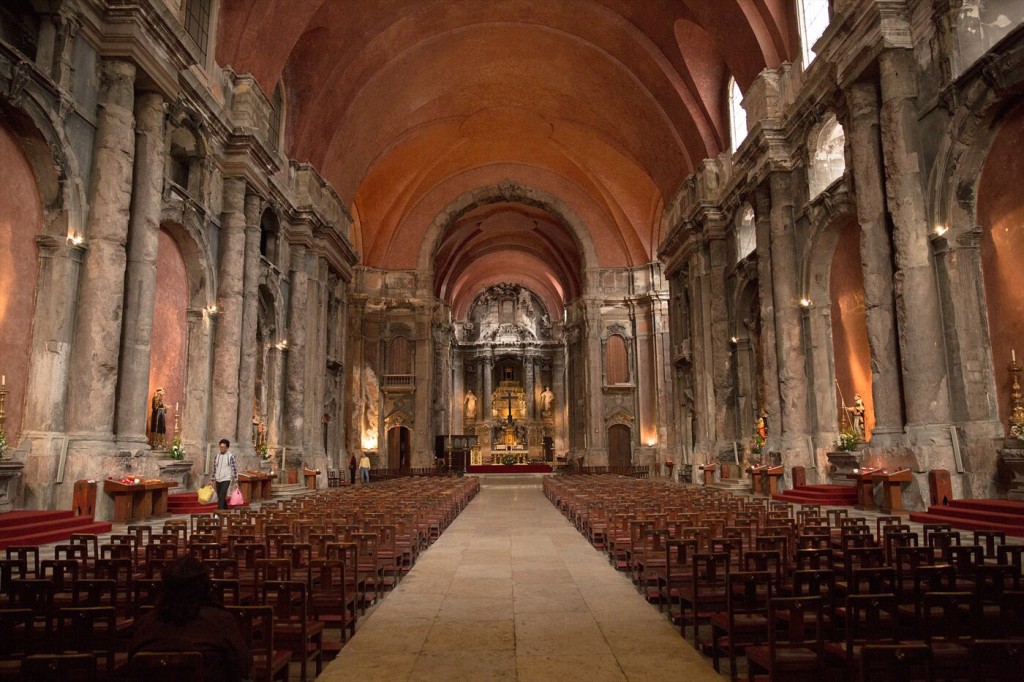 About 1000 yards from the riverfront you’ll find a big oval square with the national theater at the far end and the Rossio train station to its left. To the right of the theater is a little square where the fire damaged cathedral of Sao Domingos still resides. In front of the church is a colorful little square where many of Portugal’s immigrants congregate. In addition to Brazil, Portugal also ruled over parts of Africa and the far east.
About 1000 yards from the riverfront you’ll find a big oval square with the national theater at the far end and the Rossio train station to its left. To the right of the theater is a little square where the fire damaged cathedral of Sao Domingos still resides. In front of the church is a colorful little square where many of Portugal’s immigrants congregate. In addition to Brazil, Portugal also ruled over parts of Africa and the far east.
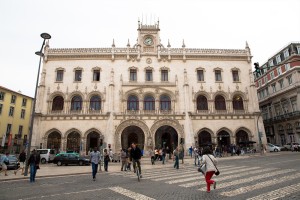 Around the other side of the Rossio train station is the even larger Praca dos Restauradores square. On the west side of the square you’ll find a great little funicular that climbs up Calcada da Gloria. Take it up the steep hill to a park (Jardim de Sao Pedro de Alcantara) for a commanding view back over the city.
Around the other side of the Rossio train station is the even larger Praca dos Restauradores square. On the west side of the square you’ll find a great little funicular that climbs up Calcada da Gloria. Take it up the steep hill to a park (Jardim de Sao Pedro de Alcantara) for a commanding view back over the city.
Once you’re up the hill you’ve entered the high town, or Bario Alta. Wander the hilly lanes back towards the river. There is a great little square called Chafariz do Carmo which makes for a perfect lunch stop. It’s named after the Carman Gothic Church that was destroyed in the 1755 earthquake but left in its ruinous state as a reminder of the terrible destruction of that day.
If you only take one public transit ride the entire time you’re in Lisbon make it Tram 28. One look and you’ll understand why. If this isn’t ‘vintage’ I don’t know what is. Tram 28 snakes its way from the Bario Alto down to Chiado Baixa and back up through the hills of the Alfama on the other side. This might be the most popular “sight” in Lisbon and it can get very crowded.
If you take tram 28 into the Alfama you’ll screech your way up a hill and past the Se Cathedral. From the stop at the top of the hill in the Alfama you’re just a couple minutes walk from the Castle de Sao Jorge, the birthplace of the city. What’s left of the castle provides great views of the city and the river below. It’s also a nice windy retreat from the hot streets of Lisbon.
 A few miles west of the city center (an easy and cheap taxi ride) is the area of Belem. This is where the royalty of Portugal moved following the great quake of 1755. It’s also home to a great museum of coaches (horse carriages), monuments to those uber cool Portuguese explorers, a maritime museum with warehouse of actual boats and a spectacular monastery that houses the remains of Vaso De Gama. Belem is worth a half day and a must see area if you come to Lisbon.
A few miles west of the city center (an easy and cheap taxi ride) is the area of Belem. This is where the royalty of Portugal moved following the great quake of 1755. It’s also home to a great museum of coaches (horse carriages), monuments to those uber cool Portuguese explorers, a maritime museum with warehouse of actual boats and a spectacular monastery that houses the remains of Vaso De Gama. Belem is worth a half day and a must see area if you come to Lisbon.
Sightseeing tip – The Lisbon card is available for 24, 48, and 72 hours. It allows free access to some sights, discounted access to others, and free transportation on all the city’s trams and subways. You can buy it at the Tourist Information Center in the airport, online, or at any location listed here. The card is expensive unless you plan on seeing multiple museums (mostly Belem) and taking public transportation. The card also covers transportation to Sintra (see below) and  discounted tickets to the Pena Palace. We were in Lisbon for three days and saw one museum in the city (Gulbenkian), most of the Belem sights, the palace in Sintra, and took a lot of tram rides. Our verdict was that the three day Lisbon card was worth it. Eliminating the hassle of buying individual tickets for the trams and subways made life a lot easier. However, if you’re not seeing any museums at all there is a cheaper public transit card, the Viva Viagem, which can be purchased in the metro stations.
discounted tickets to the Pena Palace. We were in Lisbon for three days and saw one museum in the city (Gulbenkian), most of the Belem sights, the palace in Sintra, and took a lot of tram rides. Our verdict was that the three day Lisbon card was worth it. Eliminating the hassle of buying individual tickets for the trams and subways made life a lot easier. However, if you’re not seeing any museums at all there is a cheaper public transit card, the Viva Viagem, which can be purchased in the metro stations.
Sightseeing tip – The Lisbon card is available for 24, 48, and 72 hours it allows free access to some sights, discounted access to others, and free transportation on all the city’s trams and subways.
After you’ve spent the first day getting acquainted with Lisbon spend the second day getting out of town. Sintra is about 40 minutes by train from Rossio station. It’s home to a cute, even if completely touristy, little town, a thousand year old Moorish castle, and the amazing Pena Palace which was built by a cousin of Mad King Ludwig of Neuschwanstein Castle fame (think Portuguese Disney Magic Castle).
To get to Sintra just go to the little Rossio train station. Look at the board. Mostly every train says Sintra. There are about 4-5 per hour and Sintra is the last stop. Sintra’s best sights are the Pena Palace pictured above and an old Moorish castle, which was once a lookout post for the city of Lisbon. Our tip is to pay the extra few euros for the bus shuttle that takes you up to the top of the hill to Pena Palace. It’s easy to walk between the two and when you’re done you can walk about 30 minutes downhill and back into town. But to get up to the base of the Palace we would highly recommend taking a cab. Otherwise it’s a steep long uphill hike.
Best plan of attack for Sintra would be; take an early train from Lisbon, taxi from the Sintra rail station up to the castle (be sure to pay for the shuttle that takes you to the Palace gates…it’s a long steep walk if not), stroll the palace ground if you like then walk 5 minutes to the Moorish castle, explore the castle and take in the commanding views of the Atlantic ocean, hike an easy 30 minutes down into town (just follow the signs), have lunch in Sintra, walk (10 minutes) or taxi back to the train station and return to Lisbon.
Where we ate
Portugal is known for their little custard tarts. You’ll see them in every coffee shop and on many menus around the country. We tried our first one at the hundred year old, A Brasileira, in the Baira Alto. This is one of the most famous cafes in Lisbon. Stand at the bar inside for a cheap espresso or sit outside on the terrace for some great people watching.
Given its proximity to and history with the sea it’s not surprising that fish is popular in Portugal. And if you’re looking for something to enjoy with a bottle of verde wine back in your apartment, look no further than Conserveira de Lisbon.
Located just off Praca do 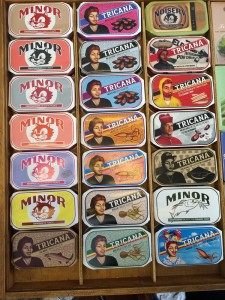 Comercio, this is like Lisbon’s institution of canned fish. It’s mostly all locally caught and canned. You’ll also find interesting spices not often seen in canned seafood (tuna, mussels, squid, sardines, etc.) like curry.
Comercio, this is like Lisbon’s institution of canned fish. It’s mostly all locally caught and canned. You’ll also find interesting spices not often seen in canned seafood (tuna, mussels, squid, sardines, etc.) like curry.
We had drinks one night at the horseshoe shaped bar, Cervejaria Amigo Antonio, in the Alfama. There are few bars that give you the opportunity to look straight across and see your friends. Friendly Antonio was a great host.
On one particularly hungover morning we ate at Leitaria Flor Sao Joao Praca Lda. I don’t know how to pronounce that, they didn’t speak English, but we were able to point well enough to order beef croquettes, a ham and cheese omelette, french fries, coffee, and orange juice. There is no better way to feel like a local than eating breakfast surrounding by old Portuguese women gossiping in the morning.
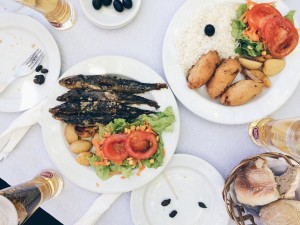 During our walk in the high town (Baixa Alto) we had lunch outside at Leitaria Academica, which is in the Carman Convent square. You can eat in the square, which was really nice, and the grilled sardines were the best we had on our whole trip. Depending on when you go to Portugal you may see grilled sardines as a hand written special on many menus. Do yourself a favor and try them.
During our walk in the high town (Baixa Alto) we had lunch outside at Leitaria Academica, which is in the Carman Convent square. You can eat in the square, which was really nice, and the grilled sardines were the best we had on our whole trip. Depending on when you go to Portugal you may see grilled sardines as a hand written special on many menus. Do yourself a favor and try them.
accommodations
We stayed in a great Airbnb apartment in the heart of the Alfama neighborhood. It shared a cute courtyard with a fado restaurant which provided the best ambiance at night. We were able to drink Portuguese wine and eat cheese, salami, and sardines while enjoying the fado singers below from the comfort of our living room.




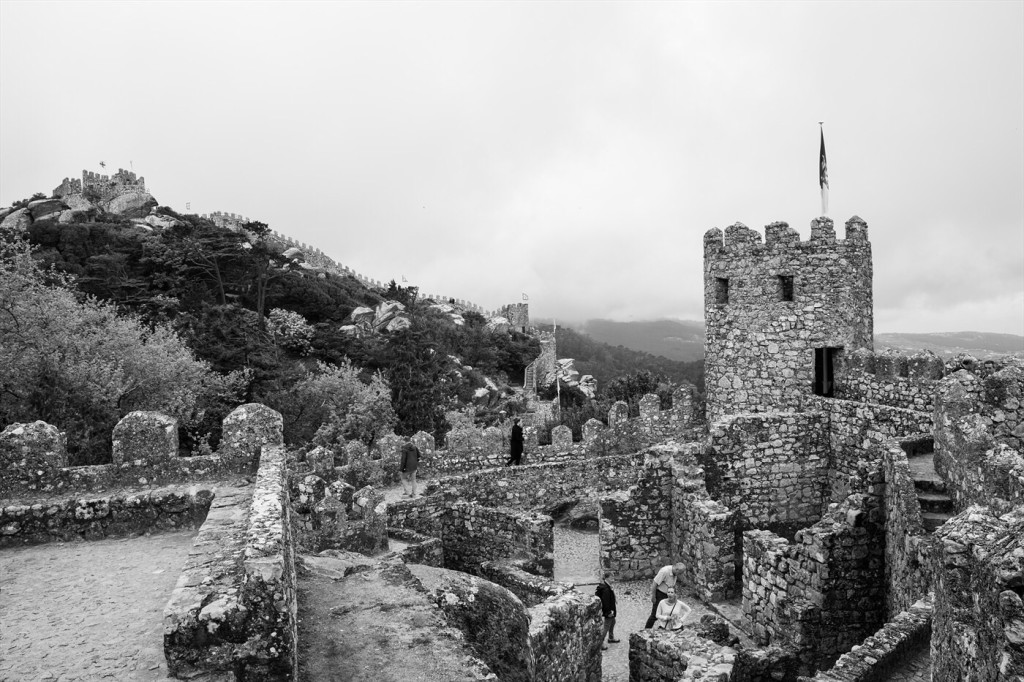

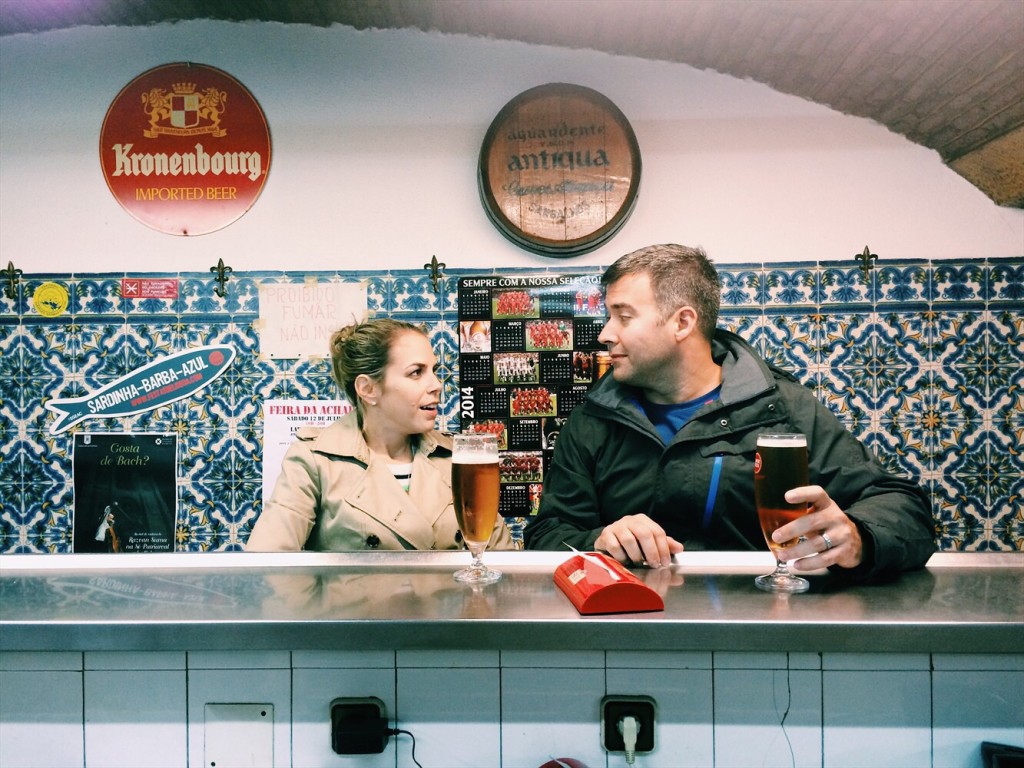
Makes me want to go back!
Very beautiful country, We invite you to join with our bali tour office with kind of bali tour package.
http://balitouroffice.com/category/bali-tour-package/
I love your travel philosophy and I could not agree more! I am planning a trip ironically for one week to Portugal and found your site extremely useful. I am looking forward to reading more about your adventures! Safe travels!